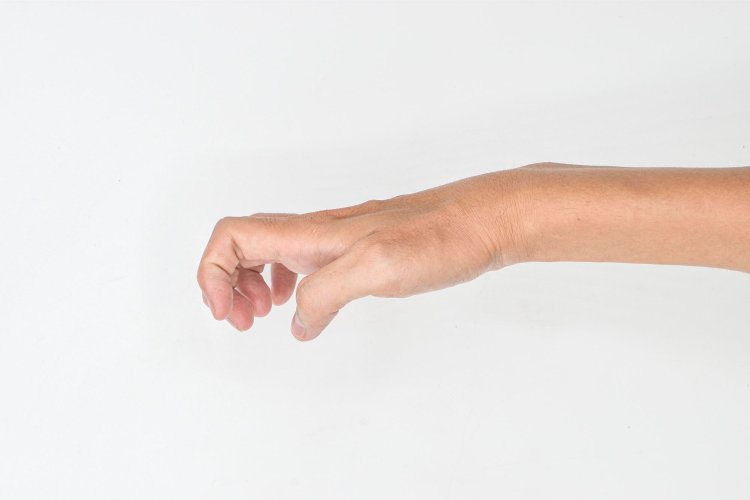Beyond Stiffness: A Comprehensive Guide to Managing Spasticity
Spasticity is a neurological condition characterized by increased muscle tone, which results in stiffness and involuntary muscle contractions. It can significantly affect an individual's ability to move and perform daily activities. In this comprehensive guide, we will explore the various aspects of spasticity, including its causes, symptoms, diagnosis, challenges posed, and treatment options available.

What is Spasticity?
Spasticity is a complex condition that arises due to damage or dysfunction in the brain or spinal cord, leading to disrupted communication between the nerves and muscles. This disruption causes certain muscles to remain in a state of constant contraction, resulting in stiffness and rigidity. Spasticity can vary in severity, ranging from mild muscle tightness to severe, painful spasms.
Symptoms of Spasticity
The symptoms of spasticity can manifest differently in each individual and may include:
- Persistent muscle stiffness or tightness, particularly in the arms, legs, or trunk
- Involuntary muscle contractions or spasms, which may be mild or severe
- Difficulty with movement, including walking, reaching, or grasping objects
- Impaired coordination and balance
- Muscle weakness, which may contribute to functional limitations
- Speech difficulties or swallowing problems in some cases
Challenges Posed by Spasticity
Living with spasticity can present numerous challenges for affected individuals, including:
- Difficulty performing activities of daily living independently, such as dressing, bathing, or eating
- Impaired mobility, increasing the risk of falls, injuries, and accidents
- Chronic pain and discomfort associated with muscle tightness and spasms
- Reduced quality of life due to limitations in participation and engagement in social, recreational, and occupational activities
- Emotional and psychological impact, including feelings of frustration, isolation, and depression
Causes of Spasticity
Spasticity is often a consequence of underlying neurological conditions or injuries that affect the brain or spinal cord. Common causes include:
- Cerebral palsy, a group of disorders that affect movement and posture
- Stroke, which can result in damage to the brain's motor pathways
- Traumatic brain injury, leading to disruption of neural connections and motor control
- Multiple sclerosis, a chronic autoimmune disease that affects the central nervous system
- Spinal cord injury, causing impairment of motor and sensory functions below the level of injury
- Brain tumors or other structural abnormalities in the brain or spinal cord
Diagnosis of Spasticity
Accurate diagnosis of spasticity involves a comprehensive evaluation by a healthcare professional, which may include:
- Detailed medical history to identify underlying conditions or injuries
- Thorough physical examination to assess muscle tone, strength, reflexes, and coordination
- Neurological assessment to evaluate motor function, sensation, and reflex responses
- Imaging studies such as magnetic resonance imaging (MRI) or computed tomography (CT) scans to visualize any structural abnormalities in the brain or spinal cord
Treatment of Spasticity
Treatment strategies for spasticity aim to alleviate symptoms, improve function, and enhance quality of life. Depending on the individual's needs and the severity of the condition, treatment options may include:
- Oral medications such as muscle relaxants or anti-spasticity drugs to reduce muscle tone and alleviate symptoms
- Botulinum toxin injections (Botox) to temporarily paralyze specific muscles and reduce spasticity
- Physical therapy interventions, including stretching exercises, strengthening exercises, and range of motion exercises to improve muscle flexibility, strength, and coordination
- Occupational therapy to develop adaptive strategies and assistive devices to enhance independence in activities of daily living
- Orthotic devices such as braces or splints to support weakened muscles and improve functional mobility
- Surgical interventions, including selective dorsal rhizotomy or intrathecal baclofen pump implantation, for severe and refractory cases of spasticity
Physical Therapy Exercises and Techniques for Spasticity
Physical therapy plays a crucial role in the management of spasticity and may incorporate various exercises and techniques tailored to the individual's needs, including:
- Passive stretching exercises to elongate muscles and reduce muscle tightness
- Active range of motion exercises to improve joint mobility and prevent contractures
- Strengthening exercises targeting specific muscle groups to enhance stability and control
- Task-specific training to practice functional activities and improve coordination and motor skills
- Aquatic therapy or hydrotherapy to take advantage of the buoyancy of water and facilitate movement with reduced weight-bearing stress on muscles and joints
Disclaimer
The information provided in this article is for educational purposes only and should not be considered medical advice. If you have any health concerns or are experiencing symptoms, it is important to consult with a healthcare professional, such as a doctor or clinic, for proper diagnosis and treatment. Always seek the advice of your doctor or other qualified health provider with any questions you may have regarding a medical condition. Do not disregard professional medical advice or delay in seeking it because of something you have read in this article.
Hashtags
#Spasticity #NeurologicalHealth #PhysicalTherapy #MuscleHealth #Healthcare
What's Your Reaction?





















